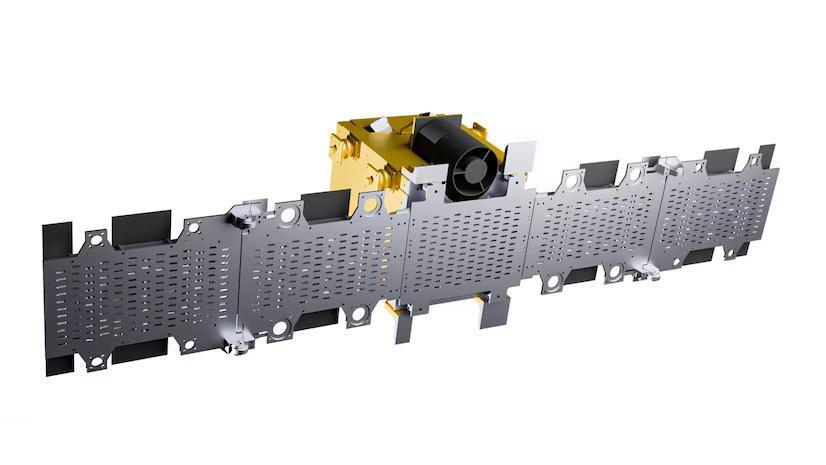
GalaxEye Unveils 0.5m Resolution Earth Observation Satellite: Enhancing India’s Earth Observation Capabilities
In a groundbreaking move, Bengaluru-based spacetech startup GalaxEye has announced the development of its second satellite, featuring an unprecedented 0.5m spatial resolution. Building on the success of its first multi-sensor satellite, Mission Drishti, GalaxEye is enhancing its SyncFusion technology by combining Synthetic Aperture Radar (SAR) and optical imaging. This revolutionary technology will enable the startup to provide high-resolution imagery, pushing the boundaries of Earth observation capabilities in India.
GalaxEye, incubated at IIT-Madras, has received significant funding of over $16.5 million to date. The startup’s ambitious plan is to launch a 32-satellite constellation by 2028, further solidifying India’s position in the global Earth observation market. With this latest development, GalaxEye is poised to make a significant impact in the industry, providing valuable insights and data to a wide range of applications, from disaster response to urban planning.
The new satellite, featuring 0.5m spatial resolution, is a significant upgrade from the previous 2.5m resolution of Mission Drishti. This enhanced resolution will allow GalaxEye to capture detailed images of the Earth’s surface, enabling accurate monitoring of environmental changes, infrastructure development, and natural disasters. The SAR and optical imaging capabilities will provide a comprehensive view of the Earth, allowing for more effective decision-making and response to emergencies.
GalaxEye’s SyncFusion technology is a unique approach that combines the strengths of SAR and optical imaging. SAR technology uses radar waves to penetrate clouds and vegetation, providing high-resolution images of the Earth’s surface, even in adverse weather conditions. Optical imaging, on the other hand, uses visible light to capture high-resolution images of the Earth’s surface. By combining these two technologies, GalaxEye’s SyncFusion technology offers a more comprehensive view of the Earth, enabling more accurate monitoring and analysis.
The significance of GalaxEye’s latest development cannot be overstated. India’s Earth observation capabilities have been limited by the resolution and coverage of existing satellites. With the launch of GalaxEye’s 0.5m resolution satellite, India will be able to access high-resolution imagery, enabling more effective monitoring and response to natural disasters, environmental changes, and infrastructure development. This will have far-reaching implications for various industries, including:
- Disaster Response: High-resolution imagery will enable rapid response to natural disasters, such as floods, landslides, and wildfires, allowing for more effective rescue operations and damage assessment.
- Environmental Monitoring: The satellite’s high-resolution imagery will enable accurate monitoring of environmental changes, such as deforestation, pollution, and climate change, allowing for more effective conservation efforts.
- Urban Planning: High-resolution imagery will enable accurate mapping and monitoring of urban areas, enabling more effective urban planning and development.
- Agriculture: The satellite’s high-resolution imagery will enable accurate monitoring of crop health, yield, and growth, allowing for more effective crop management and precision agriculture.
GalaxEye’s ambitious plan to launch a 32-satellite constellation by 2028 will further enhance India’s Earth observation capabilities, providing comprehensive coverage of the entire planet. This will enable India to access high-resolution imagery, 24/7, and respond to emergencies more effectively.
In conclusion, GalaxEye’s unveiling of its 0.5m resolution Earth observation satellite is a significant milestone in India’s spacetech journey. The startup’s innovative technology and ambitious plans will enable India to access high-resolution imagery, enhancing the country’s Earth observation capabilities and responding to emergencies more effectively. As GalaxEye continues to push the boundaries of space technology, it is poised to make a significant impact in the industry, enabling a safer, more sustainable, and more connected world.






